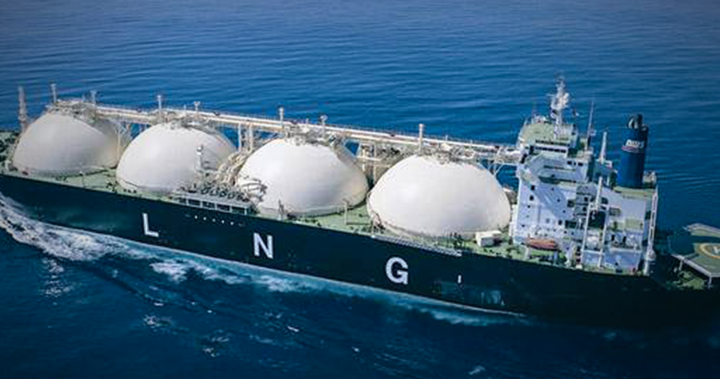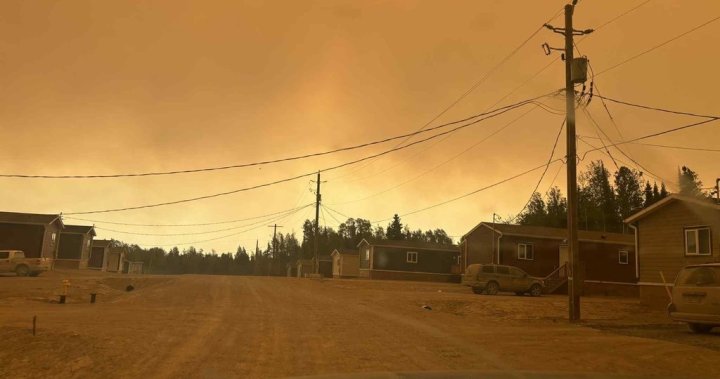Trade war fears loom large over Canadians and uncertainty continues over U.S. President Donald Trump’s tariffs, which threaten to upend global trading systems.
While inflation in Canada cooled slightly in March, fears of a recession remain. A report by the Canadian Federation of Independent Business released on Thursday (CFIB) forecast “muted growth” for the Canadian economy in the first quarter of 2025 and a “significant contraction” in the second quarter.
A recession is classified as a period of two consecutive quarters in which an economy contracts.
The report suggests that the Canadian economy grew by a meager 0.8 per cent in the first quarter but will contract in the second quarter. Recessions often lead to stagnating economic growth.
The CFIB report also said inflation in Q1 rose by 2.4 per cent but will rise further to 2.7 per cent in Q2 — well above the Bank of Canada’s target range of two per cent.
The combination of factors is leading to rising warnings from economists about the risk of “stagflation.”
So what is it, and why do some economists call it the “double kiss of death” for an economy?
The term “stagflation” dates back to the 1960s. British politician Ian Macleod is believed to be the first public figure to have used this term in 1965, a period of economic distress in the United Kingdom.
Simply put, it’s a mash-up of two economic terms.
“It’s a made-up word. It’s a combination of stagnation and inflation,” said Moshe Lander, economist at Concordia University.
Stagflation is a period of time in an economy when economic stagnation or slowdown happens at the same time as high inflation.
Tu Nguyen, economist at RSM Canada, said stagflation is a highly unusual economic phenomenon since it is the simultaneous occurrence of two opposing forces.

Get daily National news
Get the day’s top news, political, economic, and current affairs headlines, delivered to your inbox once a day.
“Typically, we see high inflation when there’s a lot of economic activity. So the economy is a little bit overheated when there is stagnation alone,” she said.
“With a reduced level of economic activity and not as much consumer spending or business investment, inflation goes down. It’s a phenomenon that happens not so often.”
This means that people going through stagflation in an economy not only suffer the consequences of a recession or a slowdown — such as high unemployment or layoffs — they also pay more for pretty much everything.
Consumers cut back on spending, they see their purchasing power decline while businesses cut back on hiring or investments. The unemployment rate goes up.
“There’s lower demand for goods and services, so businesses don’t have to hire as many people,” Nguyen said.
Lander said this double whammy is what makes stagflation particularly dangerous for an economy.
“This is the double kiss of death,” he said.
He added that stagflation is very difficult for policymakers to tackle because they typically address one problem at a time.
“You address the stagnating bit, but you made the inflation worse,” he said.
Trying to address inflation, by scaling back spending and raising interest rates, also doesn’t necessarily help.
“The thing is that if the government backs away and if interest rates go up, then that’s exactly the type of thing that’s going to make a stagnating economy turn into a rout,” he said.
Lander said that while a regular slowdown typically occurs because of demand-side shocks, such as people cutting back on spending or demand for a commodity like oil going down, a period of stagflation usually occurs when there is a supply-side shock.
This could be anything from a trade shock to a global pandemic to a global supply chain disruption.
This leads to higher input costs, which causes overall prices to rise and businesses to cut back on expenses.
“It occurred to some extent during COVID, but the textbook example that’s often used is the 1970s OPEC oil shock, which was a clear example of it,” he said.
After the 1973 Arab-Israeli war broke out, the Organization of Petroleum Exporting Countries (OPEC) imposed an oil embargo against the United States and some of its allies. This caused severe oil shortages and pushed the price of oil up 300 per cent in three months.
This caused an economic crisis in Canada too, leading to high unemployment and high prices.
This also led to higher overall input costs for businesses.
Lander said, “When these input costs rose suddenly and aggressively, firms scaled back their production and what goods made it to shelves went up in price. COVID was the same thing. How many times did we talk about COVID being the ultimate supply chain disruptor?”
Nguyen said, “Right now, we’re not in a period of stagflation by any means, but we are expecting a notable slowdown in economic activities.”
She added, “Some businesses have already started laying off workers, others are postponing hiring or cancelling job postings altogether because they anticipate lower demand. We do anticipate higher unemployment in the upcoming months.”
Lander said the economic conditions created by Trump’s tariffs are exactly the kind of supply-side shock that has led to stagflation in the past.
“What we see with tariff talk is that Donald Trump is completely destabilizing what global supply chains were rebuilt after COVID restrictions were lifted. That’s why the topic (of stagflation) is coming in vogue again,” he said.
Nguyen said the odds of a recession in North America “have definitely risen,” but a lot depends on how long the tariff pressure continues and what Canada’s response to Trump’s trade war looks like.
“Compared to the U.S., the odds of stagflation in Canada are lower, and here’s why — the U. S. has imposed tariffs on almost every single major trading partner,” she said.
“Canada has not done that. The only tariff puzzle that the Canadian economy has to deal with is with the U.S.”
But Nguyen said any slowdown or recession in the United States will send shockwaves up north.
“If the U.S. has a period of slowdown and puts significant tariffs on Canadian exports, a slowdown in Canada is almost inevitable. The inflationary impact here is going to be less severe because we don’t have tariffs on so many trading partners,” she said.







